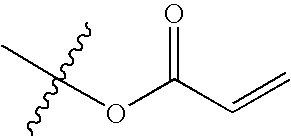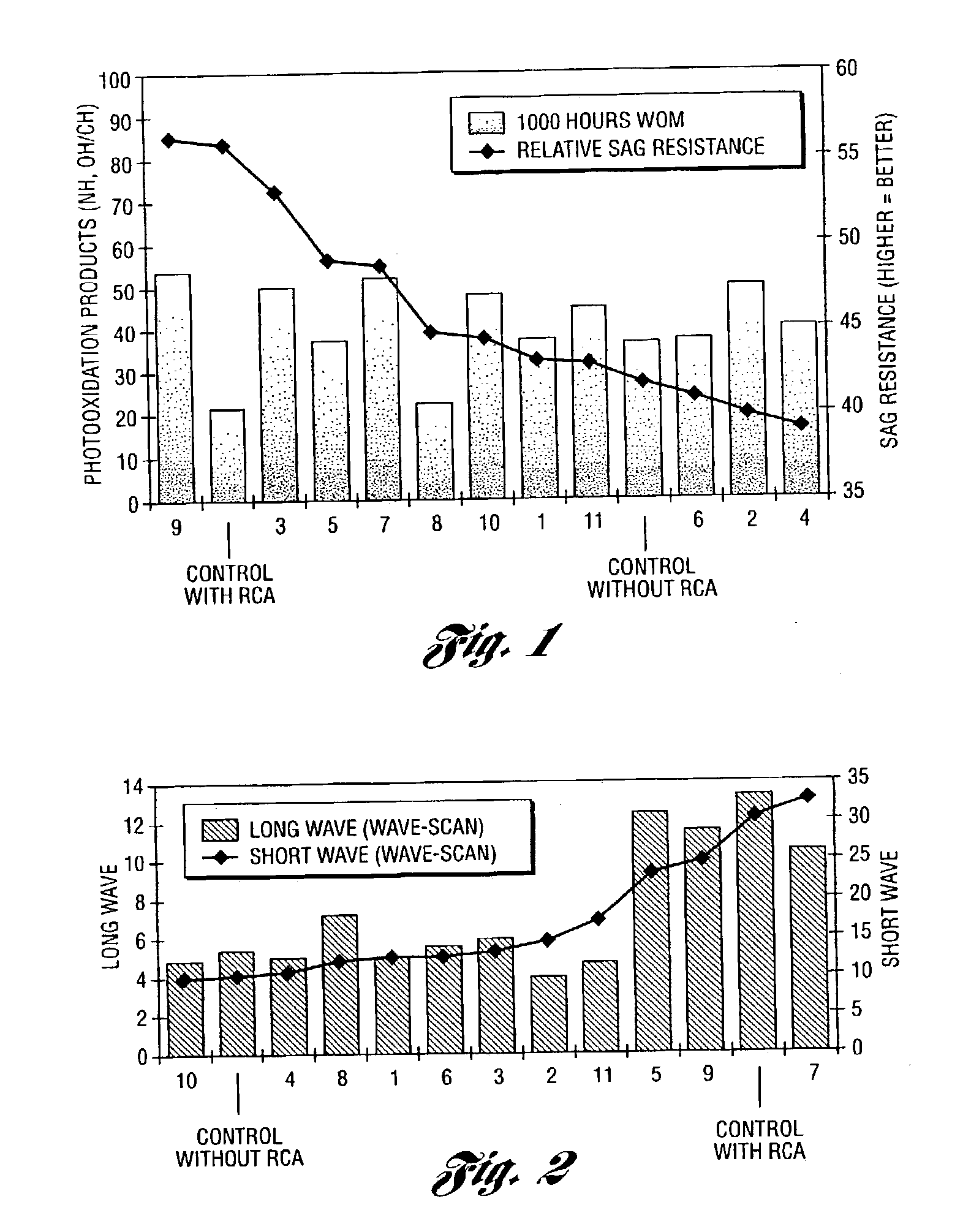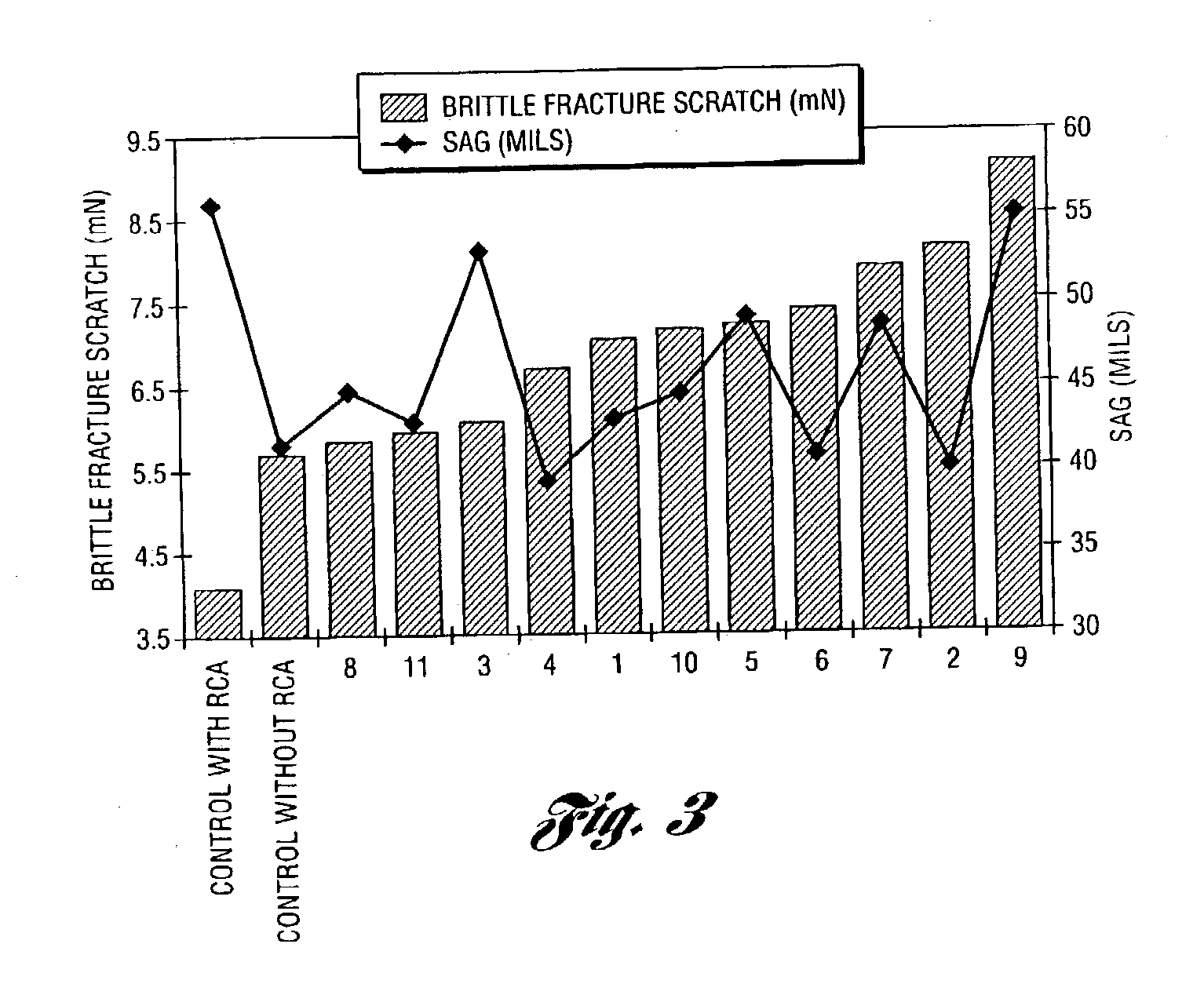Clearcoat insitu rheology control via UV cured oligomeric additive network system
a technology of additive network and clearcoat, which is applied in the direction of inks, nuclear engineering, railway components, etc., can solve the problems of high solvent system subject to government regulation, coating from such system often produces coatings marred by sag, and achieves improved sag resistance, improved stone chip resistance and scratch resistance
- Summary
- Abstract
- Description
- Claims
- Application Information
AI Technical Summary
Benefits of technology
Problems solved by technology
Method used
Image
Examples
Embodiment Construction
[0058] Table 1 provides the composition of 11 clearcoat compositions that demonstrate the utility of the present invention. The composition were prepared by combining the number of grams of each component indicated with a 300 g sample of carbamate clearcoat composition (acrylocarbamate with melamine cross-linkers). Moreover, the carbamate clearcoat composition contained standard fortification (UV absorber and Hindered Amine Light Stabilizer) with no fumed silica, rheological control agent. In preparing these examples, Santolink AM300 is blended with one third by weight hydroxyl ethyl acrylate. Sartomer CN985 is a mixed acrylated aliphatic urethanes (88% a proprietary urethane triacrylate, and 12% Hexandiol Diacrylate (HDODA) and a proprietary urethane diacrylate). Santolink AM300 is an acrylated melamine commercially available from Solutia. Durocur 4265 is a photoinitiator that induces curing throughout the thickness of an applied clearcoat. It is a mixture of 2,4,6-trimethylbenxoyl...
PUM
| Property | Measurement | Unit |
|---|---|---|
| weight percent | aaaaa | aaaaa |
| temperature | aaaaa | aaaaa |
| viscosities | aaaaa | aaaaa |
Abstract
Description
Claims
Application Information
 Login to View More
Login to View More - R&D
- Intellectual Property
- Life Sciences
- Materials
- Tech Scout
- Unparalleled Data Quality
- Higher Quality Content
- 60% Fewer Hallucinations
Browse by: Latest US Patents, China's latest patents, Technical Efficacy Thesaurus, Application Domain, Technology Topic, Popular Technical Reports.
© 2025 PatSnap. All rights reserved.Legal|Privacy policy|Modern Slavery Act Transparency Statement|Sitemap|About US| Contact US: help@patsnap.com



